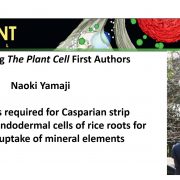
Recognizing Plant Cell first authors: Naoki Yamaji
The Plant Cell, The Plant Cell: Author ProfilesNaoki Yamaji, co-first author of OsCASP1 is required for Casparian strip formation at endodermal cells of rice roots for selective uptake of mineral elements
Current Position: Associate Professor, Group of Plant Stress Physiology, Institute of Plant Science and Resources, Okayama University
Education:…
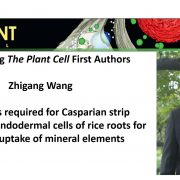
Recognizing Plant Cell first authors: Zhigang Wang
The Plant Cell, The Plant Cell: Author ProfilesZhigang Wang, co-first author of OsCASP1 is required for Casparian strip formation at endodermal cells of rice roots for selective uptake of mineral elements
Current Position: Ph.D. Candidate in College of Life Science and Technology, Guangxi University, Nanning, China
Education: 2018-present, Ph.D.…
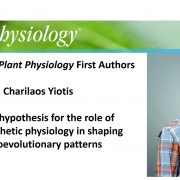
Recognizing Plant Physiology first authors: Charilaos Yiotis
Plant Physiology, Plant Physiology: Author ProfilesCharilaos Yiotis, first author of A novel hypothesis for the role of photosynthetic physiology in shaping macroevolutionary patterns
Current Position: Post-Doctoral Research Fellow in the group of Prof. Jennifer C. McEwain, Department of Botany, Trinity College Dublin
Education: Ph.D. in Plant Physiology…
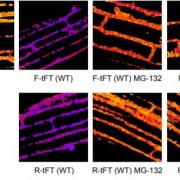
Timing is Everything: Tandem Fluorescent Timers Expand Our Understanding of Protein Longevity
Plant Physiology, Plant Physiology: News and Views, ResearchSignaling within and between cells is fast and dynamic. Such signals can involve the transport of charged ions that change membrane polarity or intercellular gradients, protein de/phosphorylation, protein interactions, and phytohormones, among others. The change in protein distribution in response to…
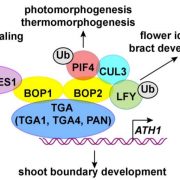
New interacting partners of BLADE-ON-PETIOLE in regulation of plant development
Plant Physiology, Plant Physiology: News and Views, ResearchOrgan boundaries are junctions that separate initiating lateral organs from the meristem or other plant parts. Cells at the boundary often exhibit slow growth rates and morphology distinct from that of the surrounding cells, and their development are controlled by complex gene networks. Lateral organ…
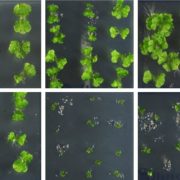
Some Things Never Change: Conserved MYC-family bHLH Transcription Factors Mediate dinor-OPDA Signaling in Liverworts
Research, The Plant Cell, The Plant Cell: In BriefThe lipidic phytohormone jasmonyl-isoleucine (JA-Ile) is a key mediator of stress-versus-growth signaling in vascular plants. Upon it’s accumulation, JA-Ile is detected by the F box receptor protein COI1 (CORONATINE INSENSITIVE1), which in turn leads to the ubiquitination and proteasomal degradation…
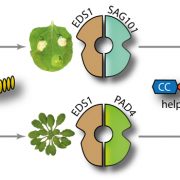
Unexpected immune signaling complexity between plant species
Research, The Plant Cell, The Plant Cell: In a NutshellGantner et al. establish N. benthamiana as a new system for analysis of immunity mediated by TIR-type immune receptors Plant Cell. https://doi.org/10.1105/tpc.19.00099
By J. Gantner and J. Stuttmann
Background: Plant pathogenic bacteria inject effector proteins inside the plant cell during…
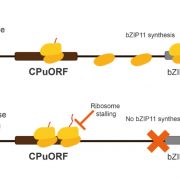
Review: Metabolite control of translation by conserved peptide uORFs: The ribosome as a metabolite multi-sensor (Plant Physiol)
Plant Science Research WeeklyNot all mRNAs are translated equally. Between 25–50% of eukaryotic mRNAs have an upstream open reading frame (uORF) that affects translation of the main ORF (mORF). Usually the presence of an uORF inhibits translation, but under some conditions the ribosome can overlook the uORF or reinitiate translation…
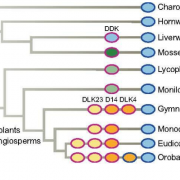
Review. Fellowship of the rings: a saga of strigolactones and other small signals (New Phytol)
Plant Science Research WeeklyStrigolactones are small signal molecules synthesized by plants. In the past few years, many studies highlighting the importance of this emerging phytohormone have been published. Strigolactones play important roles as a hormonal signals in plants and for mycorrhizal fungi interactions, they are present…

